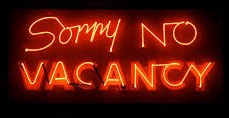High Vs. Low Season: What it means for your travel plans
To put it simply, High Season = High Occupancy.
High and low season has an immense influence on pricing and availability which are closely tied to one another. For example, imagine high season for a ski resort which would be the winter months (Christmas/New Year/maybe Easter if in cold climate); during their high season the hotels would have 100% occupancy, but would be dead during low season. Not only is it crucial for the hotel industry itself to study revenue management have a grasp on high & low seasons, but also for the whole surrounding area (i.e. Ski schools, supermarkets, restaurants, transport, etc.).
Revenue management is the study of consumer behavior at the micro-market level that helps in optimizing product availability and price to maximize profits. Hotel rooms are perishable products like anything else so it is important for hotel management to raise/lower their prices to commensurate with the high/low demand for hotel rooms.
For personal travel, while looking at dates you might find that a certain booking engine still has availability while others show no availability; this again is determined based on the time of year and place you are traveling to. While hotel rates in high season can be up to 4x more expensive for same hotel room in low season, you’ll be able to get great deals during low season.

